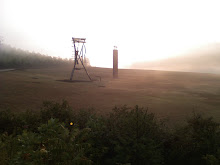Read below to figure out which option you like best! Then vote, and tell your friends to vote! The future of Rabun Gap is in YOUR hands….
***Everyone is encouraged to elaborate upon his or her answers in the comment section below! After casting your vote/s, please leave a comment about your decision- this can remain anonymous- by clicking on the comments link below. Your participation is greatly apprectiated.***
Solar panels: With a solar infrastructure already set up outside Mr. Malot’s classroom, the ESP money would best be spend on adding to the current array to produce even more power at the science building.
Hydro power! Rabun Gap has its very own spring, which could be harnessed for clean hydro power which would not disrupt an existing waterway (one of the major drawbacks to most dam projects). We should spend our $$ on this clean energy source!
Large food composter to reuse our food waste: The $$ should be spent on composting at least some of our huge amounts of food waste (currently one ton per month…yikes!!). A composter would yield rich and valuable “castings” which could be sold to local landscapers, or used to improve our very own grounds!
Windmill: Our campus should have several windmills…it’s a no brainer. But we have to start somewhere. Small units are affordable, so perhaps we could power a small faculty home, or even just one classroom with a small windmill. Given our location in a “wind gap,” wind power could be the way forward for Rabun Gap!
Geothermal heating and cooling: This is the wave of the future in energy reduction, using the simplest tool at our disposal: the earth itself! Mr. Malot has already found used pipe that would work as a geothermal cooler at his house. Pipes go down into the earth, providing easy and free cool air in the summer, and warm in the winter. We could power the pump with a small solar array if desired to make it completely electrically neutral.
Biodiesel! We already use tons of cooking oil in the Dining Hall and grill that could be reused as a cleaner and renewable fuel supply than dirty and non-renewable fossil fuels. The $$ should go to increased biodiesel production at the plant Mr. Malot already has up and running. We could even run RGNS vehicles on our cooking byproducts. Now THAT is green!
Compostable/biodegradable products: It would be beneficial for the RGNS community to spend the ESP funds on biodegradable plates, cups, bowls, utensils etc. Last weekend during MADD Fest, I visited the Grill and found compostable cups for use. After a little research, I found that the cups require less energy to manufacture, and each cup is coated with a corn-base so the cups can be composted rather than thrown in a landfill. I was happy to see the school pursuing sustainability on campus, but unfortunately Monday lunch rolled around and another stack of Styrofoam cups sat next to the drinks. The ESP needs to invest in purchasing compostable dine ware for our every day needs at RGNS and show the school that we don’t just showcase our sustainability, we live by it. -Lynsi Wavra
Community bikes: We drive too much. Investing in community bikes around campus would encourage people to drive less. Teachers could use their cars to drive less around campus and be good role models! It has been proven that most fuel in America is used on very short trips….we MUST become a nation of bikers for our long term sustainability.
Carbon footprint offsets: ESP funds should be spent on carbon footprint offsets. Our campus leaves a HUGE carbon footprint every day (that is, the amount of global warming gasses we release simply by going about our business. Think of the huge and/or inefficient buildings that we need to heat and cool, of all the people that drive to (and around) campus, of all the food we throw away, etc etc. We are obligated to offset that harmful effect by buying carbon offsets, which is money that goes toward funding alternative energy sources. Many people use carbon offsets to make their driving carbon neutral. Some people even buy carbon offsets for every flight they take, due to the high amount of carbon released by planes. This is the most direct way we can reduce our huge carbon footprint, and this is where our money should go. The only disadvantage, admittedly, is that the $$ goes of campus. BUT, it would go to established alternative energies.
Wednesday, April 30, 2008
Subscribe to:
Post Comments (Atom)


No comments:
Post a Comment